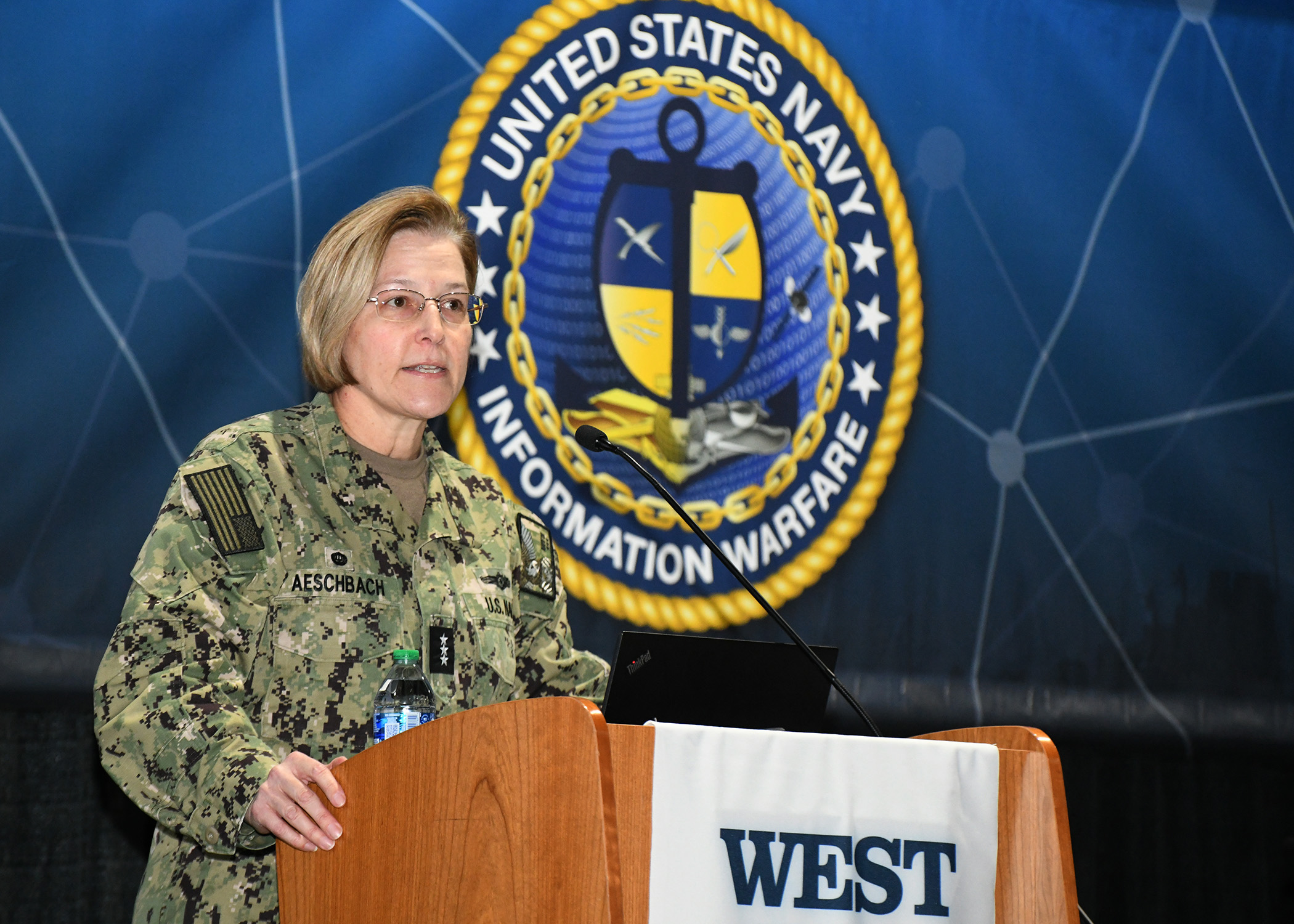
The Navy’s information warfare command is improving how to integrate advanced capabilities into the fleet, like artificial intelligence and unmanned systems, its commander said.
The service is doing better at keeping pace with software changes that are part of information warfare, Vice Adm. Kelly Aeschbach, commander of Naval Information Forces, said Tuesday at a Navy Memorial online forum.
“We just can’t take our foot off the accelerator,” Aeschbach said.
“We’re putting band-aids where we put interim training” in place to use the advances in software without fully understanding their capabilities. What is needed is “a holistic view” to see how many people will be needed in the long run and the state of funding and sustainability costs before installation.
Information warfare training is challenging because of the confidentiality surrounding the work, she said. Another hurdle is that training can require special approval when it takes place off of the coast so information training operations aboard ships do not interfere with other activities.
All training in information runs through NAVIFOR, Aeschbach said. Live virtual constructive training could be a means to close the gap and allow the concurrent exercise of skills. This change “will allow us to measure” each sailor’s performance and improve readiness.
“Training needs to be where [the software] is installed,” she said.
Connections with industry on the training needed to use their innovation to full their capability was essential, she said, adding the Navy wants to know what “they think about training.”
“We’re doing better at integrating” training and operations, she said.
In contrast to other type commanders, like aviation, “we don’t have actual platforms,” she added. “Our platforms are people,” who can be operating individually aboard a ship with reach-back capability or as part of an onshore team. “They get a lot of autonomy at a junior level” as an E-6 or junior chief on a destroyer. That “makes our career field one of the most exciting in the Navy” with eight enlisted ratings and also in the joint force.
It is also a career field in demand outside of the military, Aeschbach said, so there is competition for talent.
The demands in the information domain from the fleet are 24/7 and significantly different today from the Afghanistan and Iraq wars.
“Ten years ago we were in a much more benign environment,” she said. “We really weren’t challenged in the maritime environment.”
The days where a submarine officer could take on information warfare responsibilities as collateral duty are over, she said. “In some areas, we are being outpaced by our competitors,” meaning there is a greater need for skilled information warriors.
Aeschbach said she has real “concerns over burnout” for the 20,000 sailors in NAVIFOR. Starting with cyber as an example, “what is the right tempo” of being “on the net, off the net.”
Another challenge for the type commander has been “how we maintain an appropriate operational tempo for our personnel, effectively train them and afford them enough time to re-charge.”
In an era of great power competition, sailors in NAVIFOR are “under more pressure to find the right information,”Aeschbach said.
“That’s the exciting [aspect] of our profession and it’s also stressful,” she said.
In artificial intelligence and machine learning “we are looking for anything that analyzes information” quickly without sailors trained in information warfare doing it manually, Aeschbach said. In the future, “we’re going to be collecting more information” from manned and unmanned systems and this is where AI can play a major role.
“We’re all still struggling with trust in the algorithms” in ensuring AI is providing the right information to a commander, Aeschbach said.





